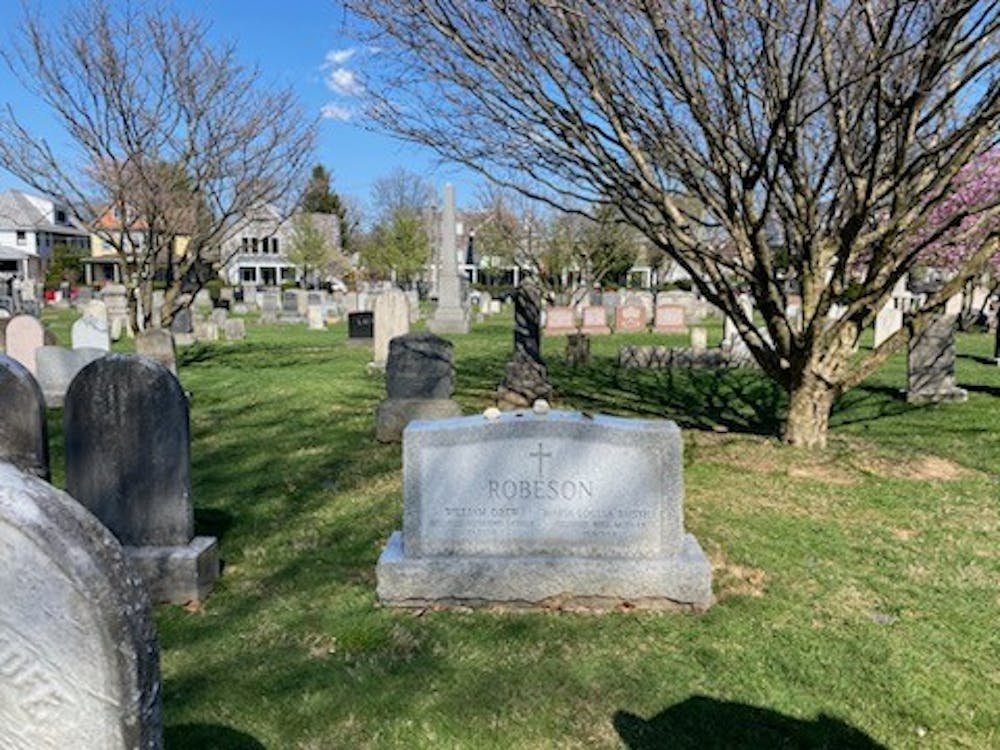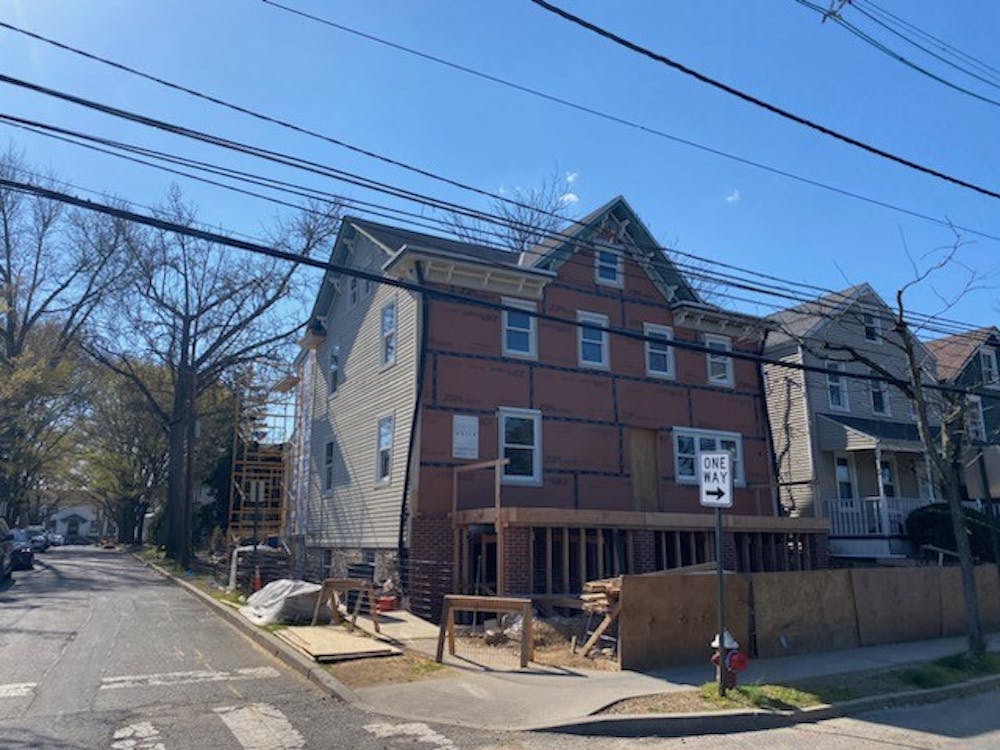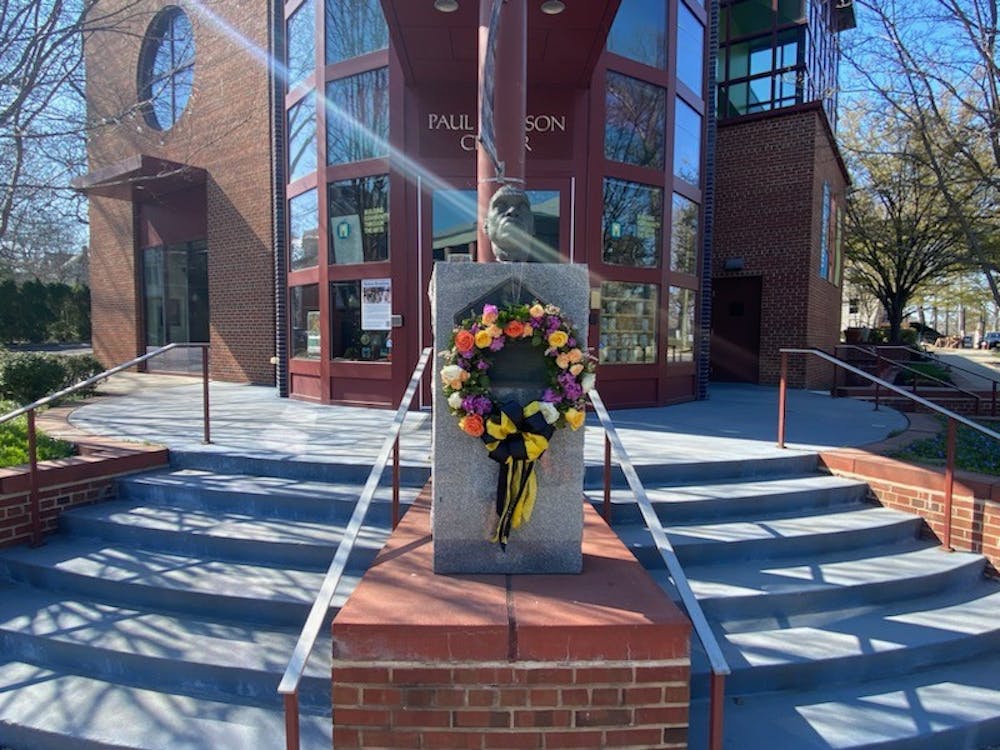Born in Princeton Township on April 9, 1898, Paul Leroy Robeson would have been 125 years old on Sunday. A nationally recognized tackle and end football player and bass-baritone singer, Robeson rose to fame as a “renaissance man.” Aside from his multitude of talents, Robeson is best remembered for his political activism.
“His legacy holds,” Gerald Horne ’70, a professor of history and African American Studies at the University of Houston, wrote in a statement to The Daily Princetonian.
Horne authored a biography of Robeson, “Paul Robeson: The Artist as Revolutionary,” which was published in 2016.
An artist, scholar, and athlete
Robeson first gained national recognition as an athlete, playing for the Milwaukee Badgers in 1922 — just two years after the National Football League (NFL) was established. Simultaneously pursuing a Bachelor of Laws degree from Columbia University, Robeson dreamt of becoming a lawyer, and his career as a professional athlete was short-lived.
However, after experiencing racism in the profession, Robeson turned away from law in favor of acting, claiming titular roles both on stage and screen. Among various productions, Robeson starred as Othello in the longest-running Shakespeare play in Broadway history and originated the role of Joe in “Show Boat.”
Robeson leveraged his celebrity status to wield national political influence — an interest that eventually segued into a foray in Washington, D.C. as a part of Henry A. Wallace’s 1948 campaign for President of the United States.
Throughout his life, Robeson was a steadfast defender of the working class and a vocal opponent of fascism abroad. For his contributions to the civil rights movement, Robeson is often described as a “forebear” to Martin Luther King Jr.

However, Horne noted that the “explicit nature of his ideology” distinguished Robeson from “‘peers’ in the Black Liberation Movement.”
Moreover, his care for diverse causes leads Denyse Leslie, vice president and managing director of the Robeson House of Princeton, to characterize him more broadly as someone “engaged in the rights of humanity.”
“It wasn’t just speaking for Black people or for poor people,” Leslie said, “He was a person who had empathy for everybody around the world.”
Robeson in Princeton: Yesterday and today

Just off Princeton’s campus, nods to Robeson are ubiquitous. The Paul Robeson Center for the Arts and Paul Robeson Place, which intersects with Witherspoon Street, are self-evident. Others, like a mural on Spring Street depicting brightly colored tomatoes, may go unnoticed. Sponsored by the Arts Council of Princeton, the artwork represents the Paul Robeson tomato — a tomato variety named in the New Jerseyan’s honor.

A mural depicting Paul Robeson tomatoes on Spring Street.
Tess Weinreich / The Daily Princetonian
The youngest son of Reverend William Drew Robeson and Maria Louisa Bustill, Robeson grew up in the heart of the historically Black Witherspoon-Jackson neighborhood. His childhood home, 110 Witherspoon Street, was owned at the time by the Witherspoon Presbyterian Church, where his father served as minister from 1880–1901.

The grave of Robeson’s parents, Reverend William Drew Robeson and Maria Louisa Bustill in Princeton Cemetery.
Tess Weinreich / The Daily Princetonian
At 17, Robeson received an academic scholarship to Rutgers and was the first Black student to graduate from the University in 1919. Princeton would not confer a degree to a Black student until almost three decades later, in 1947.
In 2023, the area surrounding Robeson’s childhood home is much-changed. Situated at the corner of Green and Witherspoon Streets — less than a quarter mile from Princeton University’s campus — the property is in a prime and rapidly gentrifying location. At once, re-development threatens to exacerbate and erase the township’s history of segregation.
In the midst of it all, the Paul Robeson House of Princeton (the House) is a community stronghold, striving to both preserve memory and keep up with the times.
The House originated after the Witherspoon Presbyterian Church re-acquired 110 Witherspoon Street in 2005 and organized an advisory board to oversee its programming. According to its website, the organization aims to “promote social justice consistent with the values and actions of Princeton’s native son, Paul Robeson.”
Board member Dr. Joy Barnes-Johnson reported that this year, the House seeks to reach “young people” and “intergenerational learning.” Among other ongoing initiatives this year, in honor of Robeson’s 125th birthday, the House is offering a fellowship for young artists, distributing seeds in town for people to grow their own Robeson tomato “freedom gardens” and sharing curriculums with local middle and high schools for students to learn about Robeson.
The board members at the House have ambitious goals for Robeson and his legacy. Leslie shared that they have a campaign to reach out to senators, and that they hope Robeson’s birthday could one day be named a national holiday.
“Our objective is to make Robeson a whole household name,” Leslie said.
The structure at 110 Witherspoon is now undergoing restoration and renovation and will function as a museum dedicated to Robeson’s life and legacy. According to the House’s website, once completed, the museum will include “community space for exhibitions, meeting rooms, and offices; as well as temporary residential lodging.” Among its former uses, 110 Witherspoon served as a residence for some of the first Black students at Princeton University.

Robeson’s childhood home, 110 Witherspoon street mid-renovation to be converted to a museum.
Tess Weinreich / The Daily Princetonian
In an interview with the ‘Prince’ in 2021, local architect Kevin Wilkes ’83 predicted that it would take a “couple years” to raise the funds necessary to finish construction, however the house remains a work in progress. Wilkes is the founder of Princeton Design Guild and has overseen the Robeson House project. According to Lesie, the latest estimate for the project’s completion is 2025. The gallery, which will be located on the first floor of the building, will be ready for visitors first before the rest of the site.
Tess Weinreich is an associate News editor for the ‘Prince.’
Please direct any corrections requests to corrections[at]dailyprincetonian.com.








